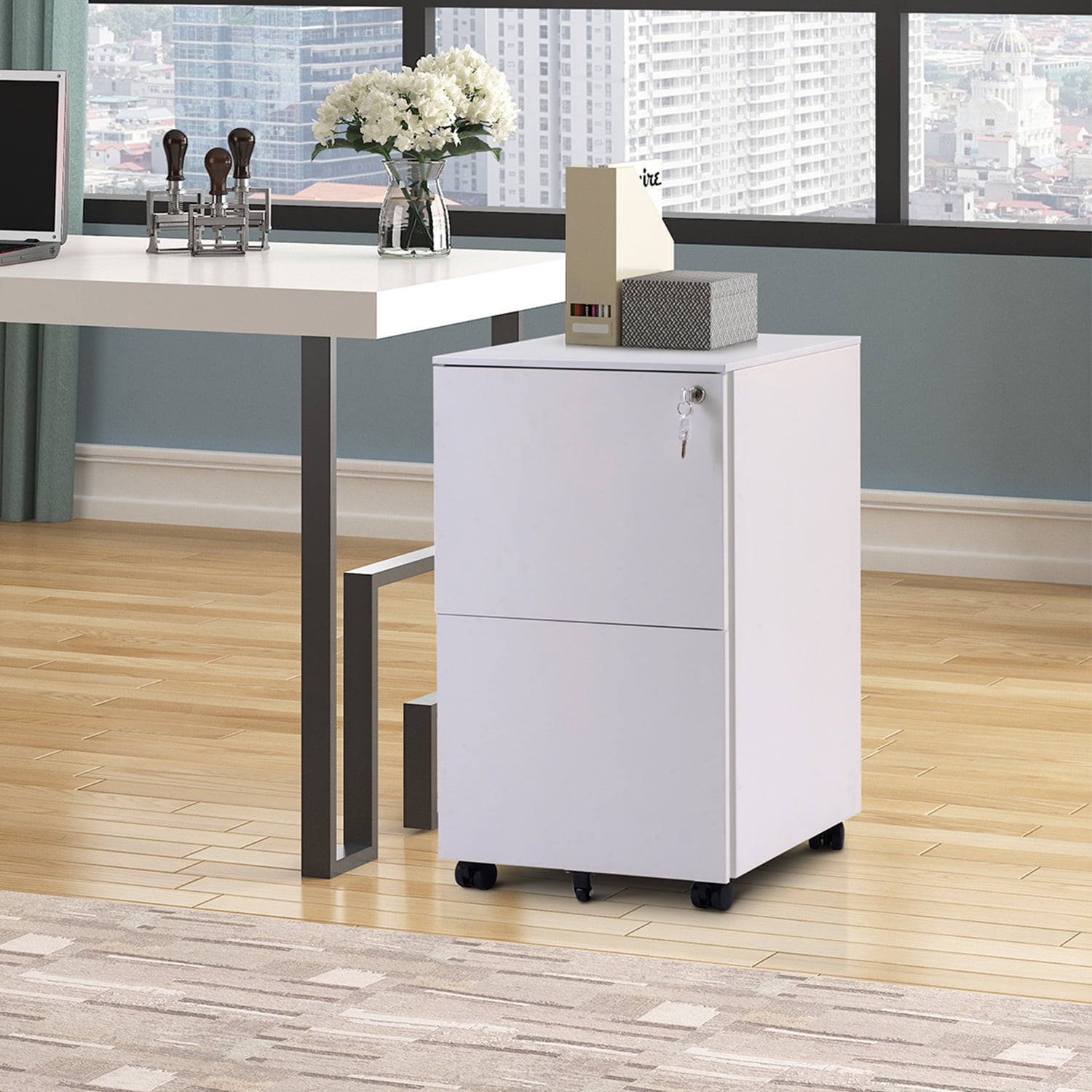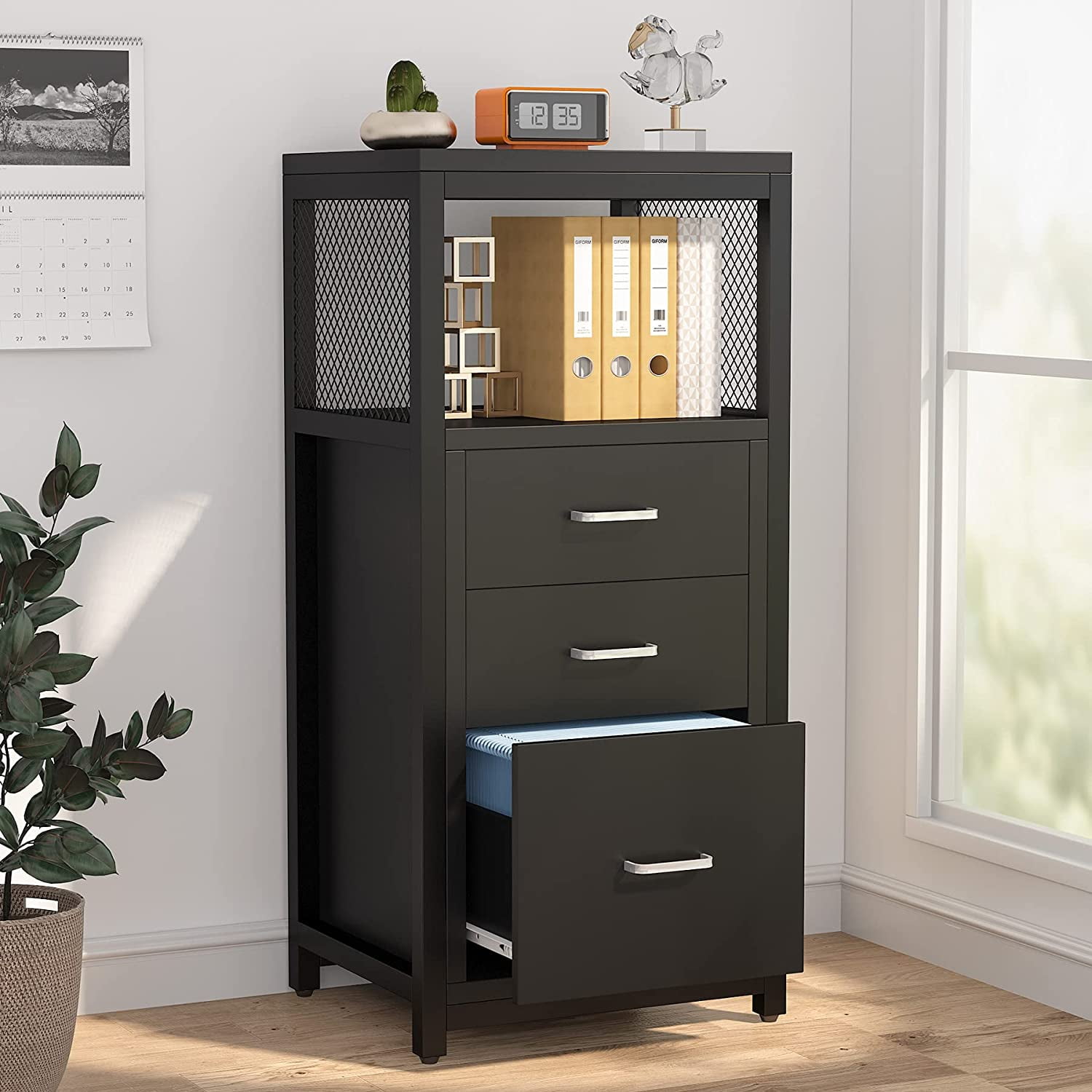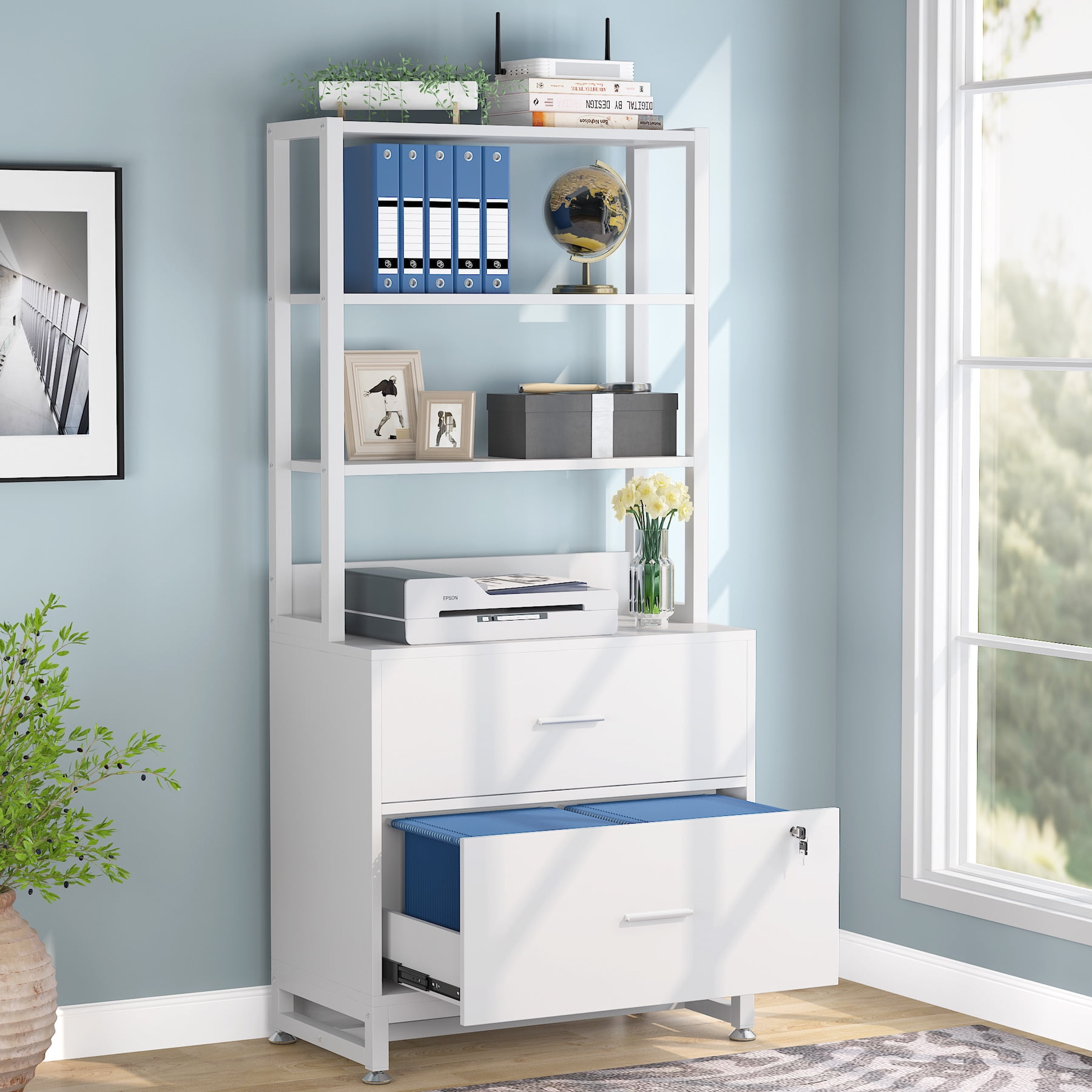Types of Home Filing Cabinets

Choosing the right filing cabinet can significantly improve home organization and efficiency. Understanding the different types available and their features is crucial for making an informed decision. This section will explore the various options, helping you select the perfect fit for your needs and space.
Vertical Filing Cabinets
Vertical filing cabinets are the most common type, characterized by their upright design with drawers that pull out horizontally. They are versatile and suitable for various filing systems, from traditional alphabetical to more specialized methods.
| Type | Pros | Cons | Price Range |
|---|---|---|---|
| Vertical | Space-saving (relatively narrow footprint), widely available, various sizes and drawer configurations. | Can be heavy, requires more floor space than lateral cabinets for equivalent storage, drawers can stick if not properly maintained. | $50 – $300+ |
| Lateral | Large storage capacity, easy access to files, less likely to tip over than vertical cabinets. | Requires more floor space, can be expensive, less common than vertical cabinets. | $100 – $500+ |
| Mobile | Space-saving, easily movable, good for smaller spaces. | Limited storage capacity compared to vertical or lateral cabinets, can be less stable, may require more care and maintenance due to moving parts. | $150 – $400+ |
Lateral Filing Cabinets
Lateral filing cabinets are designed with drawers that open sideways. This design offers easier access to files, particularly beneficial for frequently accessed documents. They typically have a wider footprint than vertical cabinets but can be just as tall, resulting in a higher overall storage capacity.
Mobile Filing Cabinets
Mobile filing cabinets are designed for easy movement, often on wheels or casters. They are an excellent choice for smaller spaces or for those who frequently need to access their files in different locations within the home. They are typically less spacious than vertical or lateral cabinets.
Filing Cabinet Materials, Best filing cabinet for home
The choice of material significantly impacts the cabinet’s durability, aesthetic appeal, and price.
A brief discussion on the advantages and disadvantages of common materials follows:
Best filing cabinet for home – Choosing the right material depends on several factors. Durability is key for long-term use, while aesthetic appeal ensures the cabinet complements your home décor. Budget also plays a significant role.
- Wood: Offers a classic and elegant look. It can be quite durable, especially hardwood, but it’s susceptible to scratches and moisture damage. It is generally more expensive than metal or plastic.
- Metal: Provides superior durability and fire resistance. Metal cabinets are typically less expensive than wooden ones and are available in various colors and finishes. However, they can be heavier and prone to dents.
- Plastic: Lightweight and relatively inexpensive, plastic cabinets are easy to clean and maintain. However, they are less durable than wood or metal and may not be as aesthetically pleasing.
Buyer’s Guide for Material Selection
Consider these factors when selecting a filing cabinet material:
Prioritize durability if you plan to store important documents long-term. If aesthetics are paramount, wood offers a more sophisticated look, while metal offers versatility. Budget constraints might lead to plastic as a more affordable option.
- Home Décor: Wood complements traditional and rustic settings, while metal works well with modern or industrial styles. Plastic offers versatility but may not be suitable for all interior design schemes.
- Storage Needs: For heavy use, metal offers superior durability. For less frequent access, wood or plastic might suffice. Consider the quantity and size of documents to be stored.
- Budget: Wood cabinets are typically the most expensive, followed by metal, then plastic. Set a realistic budget before you start shopping.
Features and Considerations for Home Use

Choosing the right filing cabinet for your home requires careful consideration of several key factors. The ideal cabinet will not only provide ample storage but also enhance your home office’s organization and efficiency. Let’s delve into the essential features and considerations to guide you in making an informed decision.
Essential Features for Home Filing Cabinets
Selecting a filing cabinet involves more than just picking a size. Several features significantly impact usability and longevity. These features enhance both the organization and security of your important documents.
- Locking Mechanisms: A secure locking mechanism is crucial for protecting sensitive personal information, financial documents, and other confidential materials. Consider cabinets with key locks or combination locks, depending on your security preferences. A high-quality lock will deter unauthorized access and offer peace of mind.
- Adjustable Shelves: Adjustable shelves provide the flexibility to customize the interior space to accommodate various document sizes and types. This allows for efficient organization of folders, binders, and other items, maximizing storage capacity and minimizing wasted space. You can easily adapt to changing storage needs over time.
- Label Holders: Label holders are essential for clear and easy identification of file contents. They allow for quick retrieval of documents and maintain an organized system. Choose cabinets with built-in label holders or consider purchasing separate labels and holders for optimal organization.
Determining Cabinet Size and Storage Capacity
The appropriate size of your filing cabinet directly correlates with the volume of documents you need to store and the available space in your home. Consider factors such as the number of documents, their sizes, and the frequency of access. For example, let’s say you’re a freelance writer with five years’ worth of project files, averaging 20 folders per year. Each folder is roughly 2 inches thick. This totals 100 folders (5 years x 20 folders/year). If you stack these folders upright, they occupy approximately 200 inches (100 folders x 2 inches/folder). A cabinet with at least 200 inches of vertical storage capacity would be needed. Always measure the available space in your home office before purchasing to ensure the cabinet fits comfortably.
Efficient File Organization Systems
Organizing your files effectively within the cabinet is crucial for easy retrieval and maintaining a streamlined workspace. Several proven systems can help you achieve this.
- Alphabetical Filing: This system arranges files alphabetically by client name, subject, or other relevant identifier. For example, files might be organized from “Aardvark Accounting” to “Zebra Zoo.” This is a simple and intuitive method suitable for most home users.
- Numerical Filing: This method assigns a unique number to each file, creating a sequential filing system. It’s particularly useful for large volumes of documents or when tracking specific projects or transactions. For instance, project files could be numbered sequentially: Project #1, Project #2, and so on.
- Chronological Filing: This system organizes files by date, useful for tracking progress on projects or managing financial records. Files are arranged from oldest to newest or vice versa, depending on your preference. For example, tax documents could be organized chronologically by tax year.
Popular Brands and Price Ranges: Best Filing Cabinet For Home

Choosing the right filing cabinet involves considering not only its functionality but also its longevity and aesthetic appeal. Understanding the different brands and their price ranges can significantly influence your purchasing decision. This section will explore some popular brands known for their quality and reliability, highlighting their unique features and typical price points. We will also delve into the factors that contribute to the varying costs of different filing cabinet types.
Popular brands offer a wide variety of filing cabinets, catering to diverse needs and budgets. The price of a filing cabinet is affected by several key factors, including the materials used, the size and capacity, the features included, and the brand reputation. Let’s examine some leading brands and their offerings.
Leading Brands and Their Product Lines
Several brands consistently receive high praise for their home filing cabinets. These manufacturers offer diverse product lines, encompassing various styles, materials, and functionalities. Each brand often caters to specific preferences and needs, ensuring a suitable option for most homes.
- Fellowes: Fellowes is a well-established name in office supplies, known for its durable and functional filing cabinets. Their product lines range from basic lateral files to more sophisticated models with features like locking mechanisms and mobile pedestals. Price ranges typically start around $50 and can extend to several hundred dollars depending on size and features.
- Amazon Basics: Offering a budget-friendly option without compromising on quality, Amazon Basics provides a selection of reliable filing cabinets. Their cabinets are generally simpler in design and features, making them a practical choice for those seeking affordability. Prices usually fall within the $40-$100 range.
- Honey-Can-Do: Honey-Can-Do offers a variety of stylish and functional filing cabinets, often featuring attractive designs and finishes. Their cabinets frequently incorporate space-saving designs and innovative storage solutions. Prices typically range from $50 to $200.
- Seville Classics: Seville Classics is known for its versatile and often multi-functional storage solutions. Their filing cabinets often incorporate features beyond basic filing, such as shelving or drawers for additional storage. Price ranges generally span from $60 to $250.
Price Comparison of Filing Cabinet Types and Brands
The price of a filing cabinet can vary considerably depending on the type, brand, size, and features. Materials also play a crucial role; steel cabinets are generally more expensive than wood or plastic ones. The table below provides a general overview of price ranges for different brands and cabinet types. Note that these are estimates, and actual prices may vary depending on retailer and specific model.
| Brand | Model (Example) | Features | Price Range (USD) |
|---|---|---|---|
| Fellowes | Fellowes Basic Lateral File | Steel construction, two drawers | $70 – $150 |
| Amazon Basics | Amazon Basics Mobile File Cabinet | Plastic construction, one drawer, mobile | $40 – $80 |
| Honey-Can-Do | Honey-Can-Do 5-Drawer Vertical File | Wood construction, five drawers, multiple finishes | $100 – $200 |
| Seville Classics | Seville Classics Mobile File Cabinet with Shelves | Steel construction, drawers and shelves, mobile | $120 – $250 |
